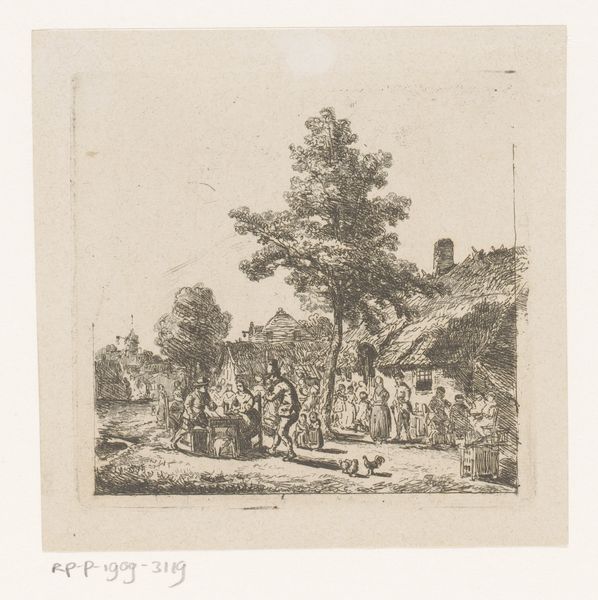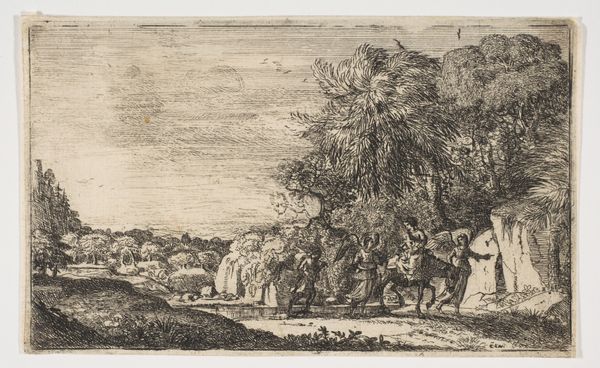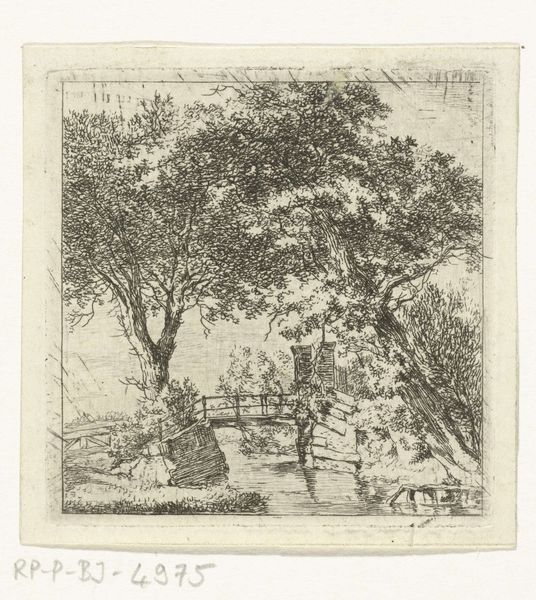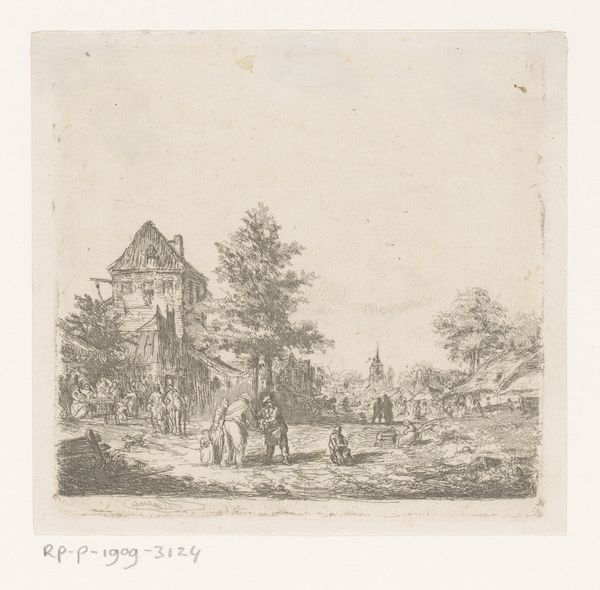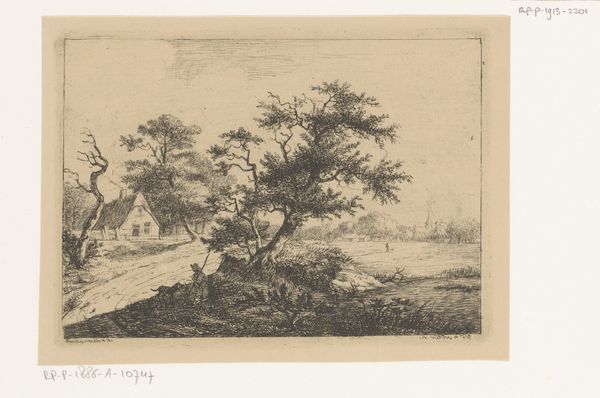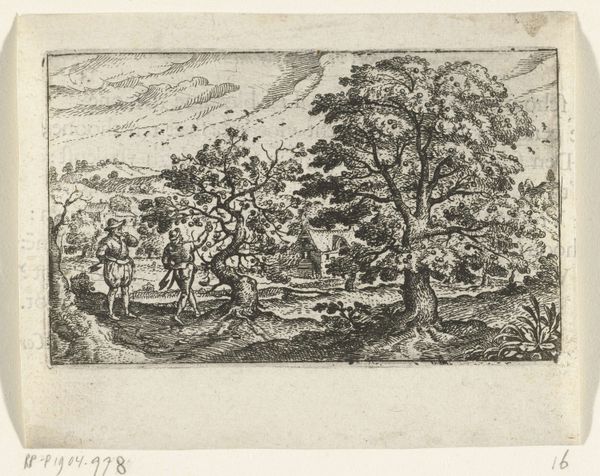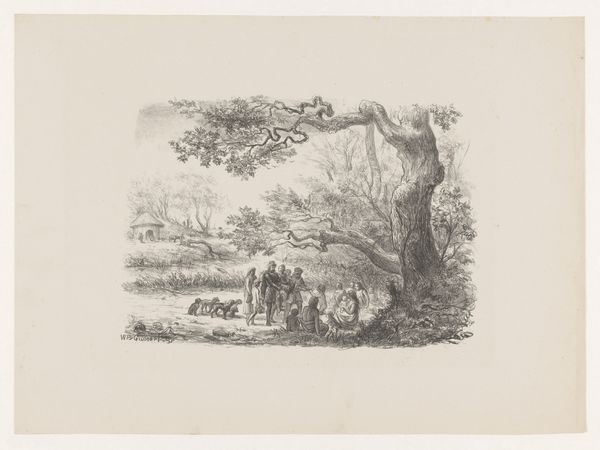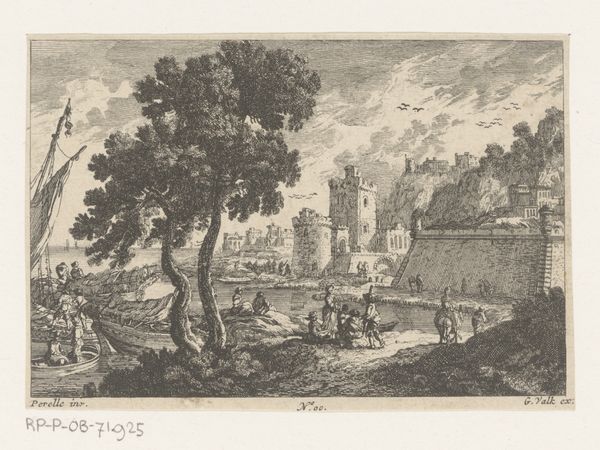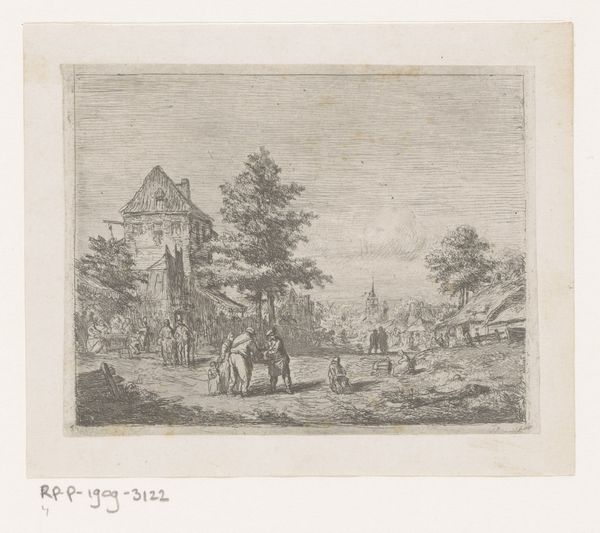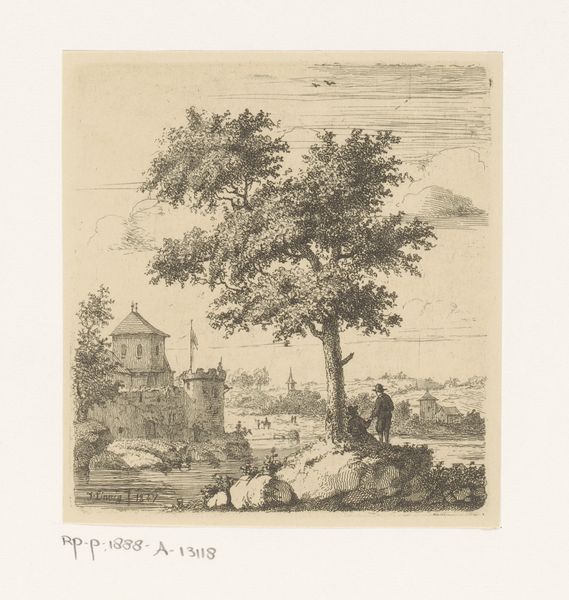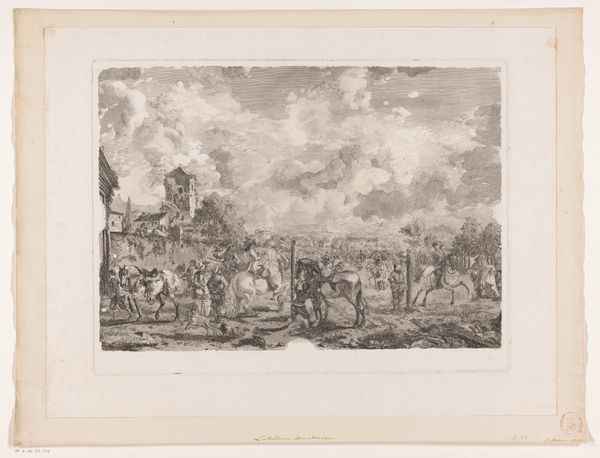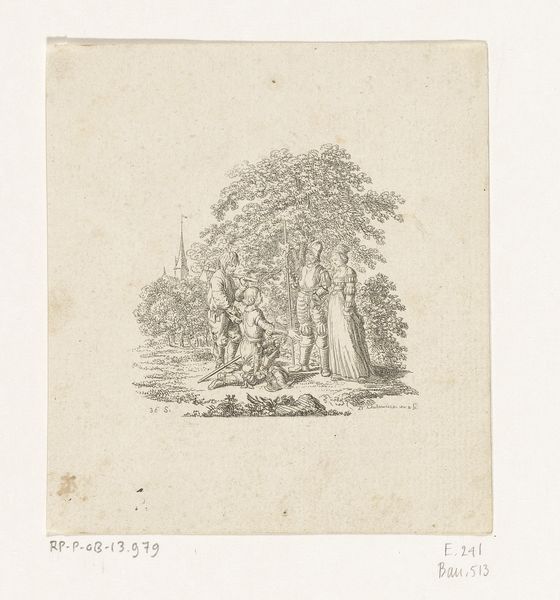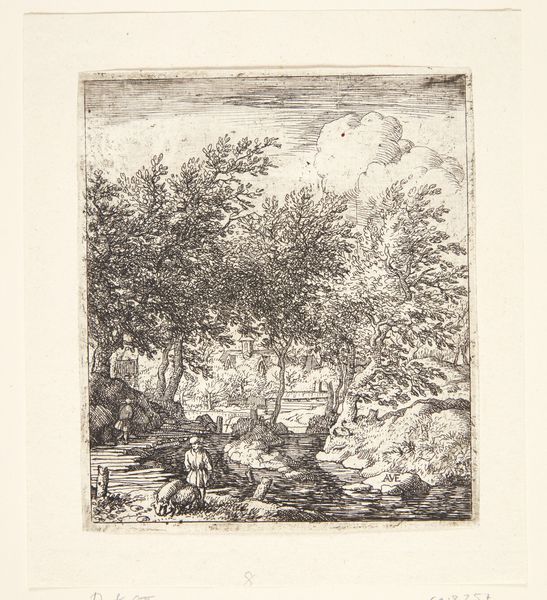
drawing, print, etching, ink
#
drawing
#
medieval
#
dutch-golden-age
# print
#
etching
#
landscape
#
etching
#
ink
#
genre-painting
#
realism
Dimensions: height 91 mm, width 101 mm
Copyright: Rijks Museum: Open Domain
Curator: Florent Nicolas Crabeels created this etching titled, "Village Scene with a Large Group in a Square", sometime between 1839 and 1879. It presents a bustling gathering centered in a rustic, possibly rural, village square. What are your initial thoughts? Editor: It feels almost like a freeze-frame of community life. There is a dense cluster of people interacting, and the overall mood suggests a communal activity of some sort – perhaps a fair, or market day. Curator: Note the deliberate rendering of each figure; how the fine, almost frenetic linework suggests movement. The tree, centrally positioned, not only anchors the composition but its delicate branches offer a textural contrast against the architecture. Editor: I am drawn to how this work documents and idealizes communal spaces. Etchings like this provide crucial insight into daily life and social structures during that period. How might this imagery shape or reinforce particular notions of community and belonging? Is it really showing an honest moment of community or something more idealized? Curator: A fair question. Crabeels meticulously constructed the scene to guide the viewer’s eye. The perspective directs attention to the various subgroups engaged in different activities, framing a dynamic social portrait, all within this formal compositional order. Editor: Yes, but within that, I also observe absences, especially in terms of class and labor representation. I see a few depictions of privileged society, which implies the power structures shaping such community gatherings. Does the artist intentionally obfuscate working-class labor, only showing certain facets of this moment in time? Curator: From a formalist viewpoint, I am compelled by how Crabeels skillfully uses a restrained tonal palette, mainly in blacks, whites, and grays to create depth. The textures – the rough thatched roofs, the delicate foliage, the clothing, all these varied visual elements contribute to the immersive experience of this intricate, and detailed social tableau. Editor: Ultimately, pieces like this call us to explore beyond surface-level representation. To dig into the stories implied, the voices not amplified, the critical omissions in such nostalgic framings of community. Curator: A fair point. These elements encourage multiple readings and expand on our understanding, pushing it into further conversations and investigations about representation, community, and historical moment.
Comments
No comments
Be the first to comment and join the conversation on the ultimate creative platform.
